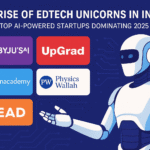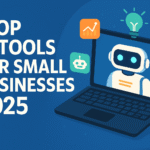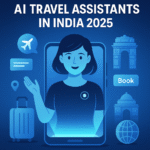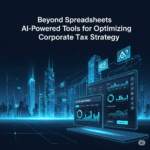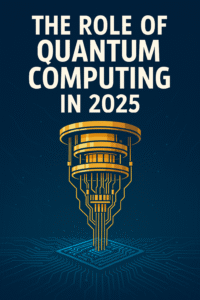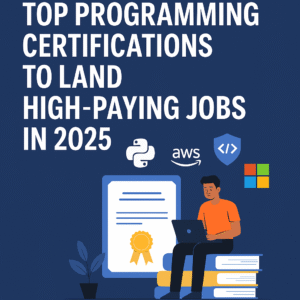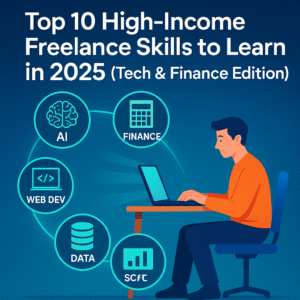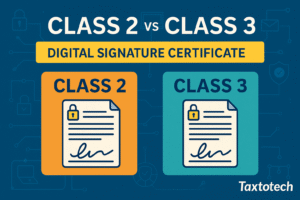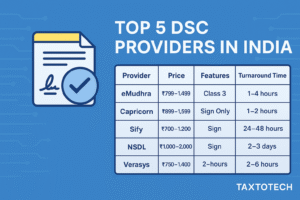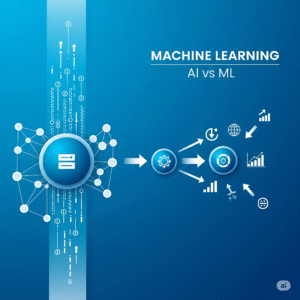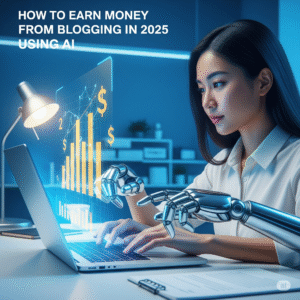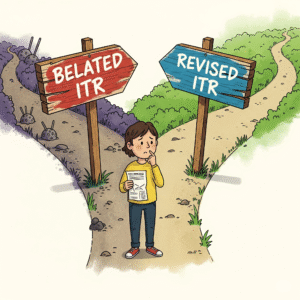Hello, Taxtotech Readers! Ever wondered how your favorite streaming service knows exactly what movie you want to watch next? Or how your email magically filters out spam? This isn’t magic; it’s the power of Machine Learning at work. It’s one of the most transformative technologies of our time, silently powering the smart world emerging around us. But with so many buzzwords flying around—AI, deep learning, neural networks—it’s easy to feel lost. Many even confuse it with “machine language,” the basic binary code a computer reads. Today, we’re cutting through the noise.
In this ultimate guide, our team at Taxtotech will demystify Machine Learning from the ground up. We’ll explore its fascinating history, break down the critical difference between AI and ML, show you the path to learning it yourself, and gaze into its exciting future. This isn’t just for aspiring data scientists; it’s for anyone curious about the technology that is fundamentally reshaping our world.
AI vs. Machine Learning: Cracking the Code
One of the most common points of confusion in tech conversations is the relationship between Artificial Intelligence (AI) and Machine Learning (ML). While they are deeply connected, they are not the same thing. Think of it as the difference between a vehicle and its engine.
- Artificial Intelligence (AI) is the broad, overarching field dedicated to creating smart machines capable of simulating human intelligence. This includes reasoning, problem-solving, understanding language, and perception. AI is the entire vehicle—the concept of a machine that can perform intelligent tasks.
- Machine Learning (ML) is a specific, powerful subset of AI. It is the engine that drives much of modern AI. Instead of being explicitly programmed with rules for every possible situation, an ML system is “trained” on vast amounts of data. It learns the patterns within that data to make predictions, classify information, or make decisions on its own.
In short, all Machine Learning is AI, but not all AI involves Machine Learning. Early AI systems, for instance, used complex sets of hard-coded rules. ML was the breakthrough that allowed machines to learn for themselves, making them far more flexible and powerful.
The Bedrock of Intelligence: Understanding the Base of Machine Learning
So, how does a machine actually “learn”? The foundation of Machine Learning rests on three essential pillars: Data, Algorithms, and the Learning Process.
1. Data: The Fuel for Learning
Data is the lifeblood of ML. Without it, even the most sophisticated algorithm is useless. The quality, quantity, and type of data you use will directly determine the performance of your model. It can be images, text, sales figures, sensor readings—anything that can be digitally recorded.
2. Algorithms: The Brains of the Operation
An algorithm is a set of rules and statistical techniques used to find patterns in data. Think of it as a recipe the machine follows to learn. ML algorithms are generally categorized into three main types:
- Supervised Learning: This is the most common approach. The algorithm learns from data that has been “labeled” with the correct answer. For example, you feed it thousands of emails labeled as “spam” or “not spam.” The algorithm learns the characteristics of each and can then classify new, incoming emails.
- Unsupervised Learning: Here, the algorithm works with unlabeled data to discover hidden patterns or structures on its own. It’s like giving a person a box of mixed fruits and asking them to sort them into groups based on similarity (color, size, shape) without telling them what the fruits are. This is used for tasks like customer segmentation.
- Reinforcement Learning: This algorithm learns through trial and error, much like a pet learning a new trick. It receives rewards for correct actions and penalties for incorrect ones. The goal is to maximize the cumulative reward over time. This is the technology behind game-playing AI and a lot of modern robotics.
3. The Learning Process (Training):
This is where everything comes together. You feed the data into your chosen algorithm to create a “model.” The model is the final output of the training process—a complex mathematical representation of the patterns it found. This model can then be used to make predictions on new, unseen data.
A Journey Through Time: The History of Machine Learning
The idea of a thinking machine isn’t new. Its journey from science fiction to reality is a story of ambition, setbacks, and incredible breakthroughs. The experts at Taxtotech have compiled this timeline to show just how far we’ve come.
| Era | Time Period | Key Developments & Figures | Description |
| The Dawn | 1950s – 1960s | Arthur Samuel, Frank Rosenblatt, The Perceptron | The term “Machine Learning” is coined. Early programs like Samuel’s checkers player demonstrate the ability to learn. The Perceptron, an early neural network, is created, laying theoretical groundwork. |
| The First AI Winter | 1970s – 1980s | Limited computational power, lack of data | Progress stalls as the initial hype outpaces the available technology. The complexity of problems proved too great for the computers of the day, leading to reduced funding and interest. |
| The Renaissance | 1980s – 1990s | Backpropagation, Support Vector Machines (SVMs) | The invention of backpropagation makes it practical to train multi-layered neural networks. New, effective algorithms like SVMs emerge, rekindling research and finding practical applications. |
| The Modern Era | 2000s – Present | Big Data, GPUs, AlexNet (2012), Deep Learning | The internet explosion creates “Big Data.” Powerful Graphics Processing Units (GPUs) provide the computational muscle needed for deep learning. AlexNet’s victory in an image recognition contest marks the start of the modern deep learning revolution. |
Your Roadmap to Mastery: How to Learn Machine Learning
Inspired to start your own journey into Machine Learning? It’s an accessible field for those with dedication. This roadmap breaks down the steps to get you from beginner to practitioner.
| Step | Focus Area | Key Concepts & Tools | Pro Tip from Taxtotech |
| 1 | Build the Foundation | Math: Linear Algebra, Calculus, Probability, Statistics. Programming: Strong proficiency in Python. | Don’t just read about the math; find online courses that show you how to implement these concepts in Python code. |
| 2 | Master Core Concepts | Supervised, Unsupervised, Reinforcement Learning. Bias-Variance Tradeoff, Overfitting, Model Evaluation. | Focus on understanding why an algorithm works, not just how to use a library to call it. This is key to effective troubleshooting. |
| 3 | Learn the Toolkit | Libraries: NumPy, Pandas (for data wrangling), Matplotlib, Seaborn (for visualization), Scikit-learn (for classical ML). | Scikit-learn is your best friend when starting. Its consistent API makes it easy to experiment with different models. |
| 4 | Apply Your Knowledge | Projects: Work on real-world datasets from platforms like Kaggle. Start simple (e.g., predicting house prices) and build complexity. | Document your projects on GitHub. A strong portfolio is more valuable than any certificate. For career advice, visit us at https://taxtotech.com |
| 5 | Explore Advanced Topics | Deep Learning: TensorFlow, PyTorch. Specializations: Natural Language Processing (NLP), Computer Vision (CV), MLOps. | Choose a specialization that genuinely interests you. Passion will fuel you through the more challenging concepts of deep learning. |
Gazing into the Crystal Ball: The Future of Machine Learning
The evolution of Machine Learning is accelerating. What was once cutting-edge is now standard, and the future promises even more profound changes. Here are the key trends shaping the next decade.
Generative AI: The Creative Force
You’ve likely heard of models like ChatGPT and DALL-E. This is Generative AI, a branch of ML where models can create entirely new, original content—from writing articles and code to composing music and designing images. This technology is set to revolutionize creative industries and content creation.
Explainable AI (XAI): Building Trust in a Black Box World
As ML models make increasingly critical decisions in finance, healthcare, and law, the need for transparency is paramount. Explainable AI is a set of tools and techniques aimed at helping humans understand why a model made a particular decision, moving away from the “black box” problem and building trust.
TinyML and Edge AI: Intelligence Everywhere
Traditionally, heavy ML computations happened in the cloud. The future is moving this intelligence to the “edge”—directly onto low-power devices like your smartphone, smartwatch, or industrial sensors. This enables real-time responses, enhances privacy, and reduces reliance on constant internet connectivity.
MLOps: Bridging the Gap to Production
MLOps (Machine Learning Operations) is the application of DevOps principles to the ML lifecycle. It focuses on creating a streamlined, automated, and reliable process for taking models from the experimental phase to real-world production and then monitoring and maintaining them. This is making ML adoption more robust and scalable for businesses.
Conclusion: Your Future in a Machine-Learned World
Taxtotech Readers, we’ve journeyed from the theoretical foundations of Machine Learning to its exciting future frontiers. It is more than just a technological trend; it’s a fundamental shift in how we solve problems, create value, and interact with the digital world. Understanding its principles is becoming an essential form of literacy in the 21st century.
Whether you’re a business leader looking to innovate or an individual eager to build a future-proof career, the path forward is illuminated by data and powered by learning algorithms. At Taxtotech, we are passionate about empowering you with the knowledge to navigate this landscape. The journey of a thousand miles begins with a single step, and your journey into Machine Learning can start today.
Frequently Asked Questions (FAQ)
1. What is the single most important skill for learning Machine Learning?
While math and coding are essential, the most critical skill is problem-solving. The ability to look at a real-world problem, frame it as an ML task, select the right data and algorithm, and interpret the results is what separates a good practitioner from a great one.
2. Can I learn Machine Learning without a degree in computer science?
Absolutely. With the wealth of high-quality online courses, open-source tools, and public datasets available, anyone with dedication and a logical mindset can learn ML. A strong portfolio of personal projects is often more impressive to employers than a specific degree.
3. Is Machine Learning the same as Data Science?
They are related but distinct. Data Science is a broader field that encompasses the entire process of extracting knowledge and insights from data. Machine Learning is a key tool used by data scientists, but data science also includes data cleaning, exploratory analysis, visualization, and communication of results.
4. How is Taxtotech involved with Machine Learning?
At Taxtotech, we leverage Machine Learning to develop intelligent, data-driven solutions for our clients. From predictive analytics to process automation, we help businesses harness the power of their data. We also believe in empowering the community by providing educational resources like this guide to foster the next generation of tech talent.
What part of Machine Learning excites you the most? Is it the history, the future potential, or the challenge of learning it yourself? Share your thoughts in the comments below, and don’t forget to share this guide with anyone curious about the future of tech!


